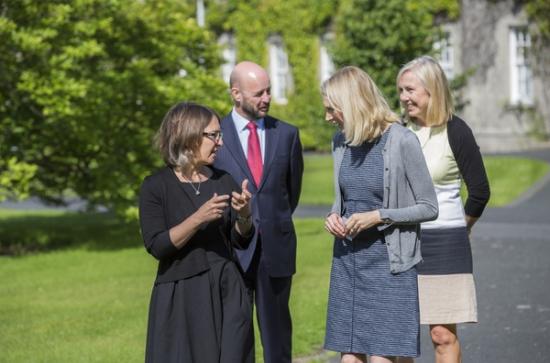
Irish prison population has increased 33% since mid-90s
First ever handbook of Irish criminology launched at Maynooth University
With Ireland’s prison population having increased by over a third to just under 4,000 people since the mid-90s, policy makers must be wary of replicating the situation in the United States, says Dr Claire Hamilton, Senior Lecturer in Law at Maynooth University. Dr Hamilton was speaking in advance of Maynooth University’s 10th annual North South Criminology Conference, which will see the launch of the first of its kind Handbook of Irish Criminology, of which she is co-editor.
According to Dr Hamilton, the growth in the prison population in Ireland, albeit from a low base, is linked to the adoption of American-inspired anti-crime measures. Ireland’s adoption of a more hard-line approach can be traced to 1996 when the murders of Veronica Guerin and Garda Jerry McCabe caused widespread public alarm about criminal activity.
Since then, new mandatory type sentences have been an important driver of prison population. Concerns about the extent and nature of organised crime led to a shift from a discretionary, individualised model of sentencing to a more mechanical and, often, more punitive one with presumptive mandatory minimum terms set out for serious drug and firearms offences. For example, the Criminal Justice Act 1999 provides that any person convicted of the possession of drugs with a value of at least €13,000 with intent to supply shall presumptively receive a minimum term of ten years.
These laws were inspired by similar measures initially adopted in the United States during the so-called “War on Drugs” in the 1980s. These measures, among other factors, saw America’s incarceration levels escalate dramatically from a rate of 120 per 100,000 population (comparable to European levels) to almost 700 per 100,000 population.
While these policy choices were initially motivated by the rising rate of crime in America, studies show that, while the number of crimes being committed have decreased since the 1970s, the US prison population has increased exponentially. The increase in incarceration levels is strongly linked to the number of prisoners serving mandatory terms which are longer and are frequently without the possibility of parole. This has led to a significant build-up of the prison population with the resulting pressure on the system demanding huge expenditure from individual states and occupancy standing at 102.7% of official capacity.
Professor Shadd Maruna, Adjunct Professor of Maynooth University, will deliver the keynote address at the conference. Reflecting on the current situation in the American justice system, he observed: “It has gotten to the point where the US is being forced to address issues that have been ignored for decades. This has been hastened by a series of tragic encounters between citizens and law enforcement officers, which have opened up an overdue conversation about issues such as the disproportionate treatment of ethnic minorities in the criminal justice system.”
Dr Hamilton observes: “The US experiment in mass incarceration and talking tough on crime can clearly now be called a mistake. However, as many states are now learning, the difficulty is that these mistakes are very hard to undo. We are seeing a change in the discourse around the justice system now, but studies estimate it would take upwards of twenty years to achieve full reform, if the US was to begin reversing its current course tomorrow.”
“Ireland would do well to heed these lessons; however, it seems that, despite the clear evidence that policies such as mandatory sentencing do not work and calls to scrap them by the Law Reform Commission, the current administration is reluctant to abandon the policy. In fact, the current Programme for Government sets out plans for the introduction of further mandatory sentencing legislation.”
The launch of the first ever Handbook of Irish Criminology at the conference is a seminal moment for the field in Ireland. The Handbook consists of original, comprehensive and critical reviews of theory, research, policy and practice in a wide range of subject areas, and is the first edited collection of its kind to bring together the work of leading Irish criminologists in a single volume.
The Handbook will be a vital guide to a field that has progressed quickly in the last decade as a result of an increase in the availability of data. Although criminal justice agencies in the Republic of Ireland began to computerise their records at the turn of the century, the involvement of the Central Statistics Office in the compilation of recorded crime statistics since 2003 and Maynooth University’s All-Island Research Observatory, which creates spatial maps of crime in Ireland, has greatly improved data quality and analysis. The information collected in this edition will be a vital tool for academics and policy makers looking to understand the current dynamics of the Irish criminal justice system.
